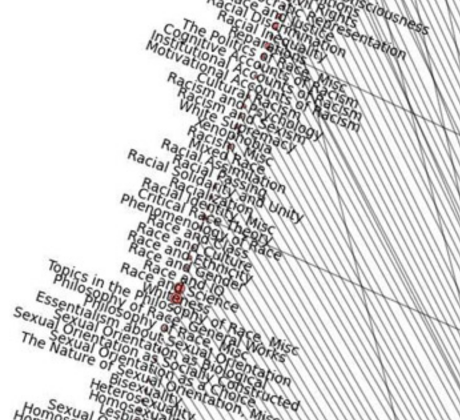Why Neil deGrasse Tyson is a philistine by Damon Linker.
From the post:
Neil deGrasse Tyson may be a gifted popularizer of science, but when it comes to humanistic learning more generally, he is a philistine. Some of us suspected this on the basis of the historically and theologically inept portrayal of Giordano Bruno in the opening episode of Tyson’s reboot of Carl Sagan’s Cosmos.
But now it’s been definitively demonstrated by a recent interview in which Tyson sweepingly dismisses the entire history of philosophy. Actually, he doesn’t just dismiss it. He goes much further — to argue that undergraduates should actively avoid studying philosophy at all. Because, apparently, asking too many questions “can really mess you up.”
Yes, he really did say that. Go ahead, listen for yourself, beginning at 20:19 — and behold the spectacle of an otherwise intelligent man and gifted teacher sounding every bit as anti-intellectual as a corporate middle manager or used-car salesman. He proudly proclaims his irritation with “asking deep questions” that lead to a “pointless delay in your progress” in tackling “this whole big world of unknowns out there.” When a scientist encounters someone inclined to think philosophically, his response should be to say, “I’m moving on, I’m leaving you behind, and you can’t even cross the street because you’re distracted by deep questions you’ve asked of yourself. I don’t have time for that.”
“I don’t have time for that.”
With these words, Tyson shows he’s very much a 21st-century American, living in a perpetual state of irritated impatience and anxious agitation. Don’t waste your time with philosophy! (And, one presumes, literature, history, the arts, or religion.) Only science will get you where you want to go! It gets results! Go for it! Hurry up! Don’t be left behind! Progress awaits!
There are many ways to respond to this indictment. One is to make the case for progress in philosophical knowledge. This would show that Tyson is wrong because he fails to recognize the real advances that happen in the discipline of philosophy over time.
….
I remember thinking the first episode of Tyson’s Cosmos was rather careless with its handling of Bruno and the Enlightenment. But at the time I thought that was due to it being a “popular” presentation and not meant to be precise in every detail.
Damon has an excellent defense of philosophy and for that you should read his post.
I have a more pragmatic reason for recommending both philosophy in particular and the humanities in general to CS majors. You will waste less time in programming than you will from “deep questions.”
For example, why have intelligent to the point of being gifted CS types tried repeatedly to solve the issues of naming by proposing universal naming systems?
You don’t have to be very aware to know that naming systems are like standards. If you don’t like this one, make up another one.
That being the case, what makes anyone think their naming system will displace all others for any significant period of time? Considering there has never been a successful one.
Oh, I forgot, if you don’t know any philosophy, one place this issue gets discussed, or the humanities in general, you won’t be exposed to the long history of language and naming discussions. And the failures recorded there.
I would urge CS types to read and study both philosophy and the humanities for purely pragmatic reasons. CS pioneers were able to write the first FORTRAN compiler not because they had taken a compiler MOOC but because they had studied mathematics, linguistics, language, philosophy, history, etc.
Are you a designer (CS pioneers were) or are you a mechanic?
PS: If you are seriously interested in naming issues, my first suggestion would be to read The Search for the Perfect Language by Umberto Eco. It’s not all that needs to be read in this area but it is easily accessible.
I first saw this in a tweet by Christopher Phipps.




